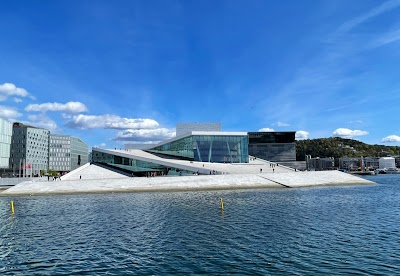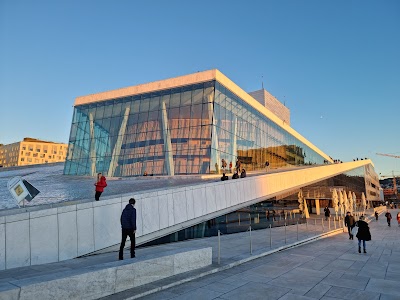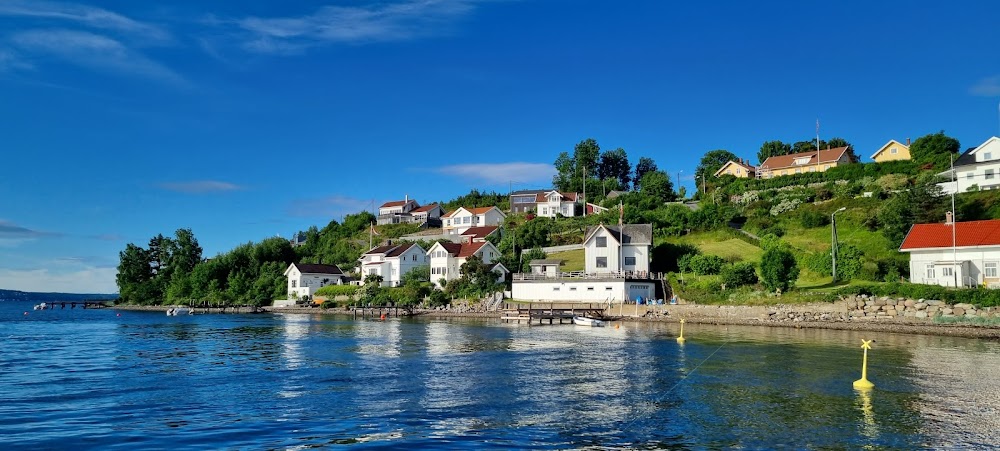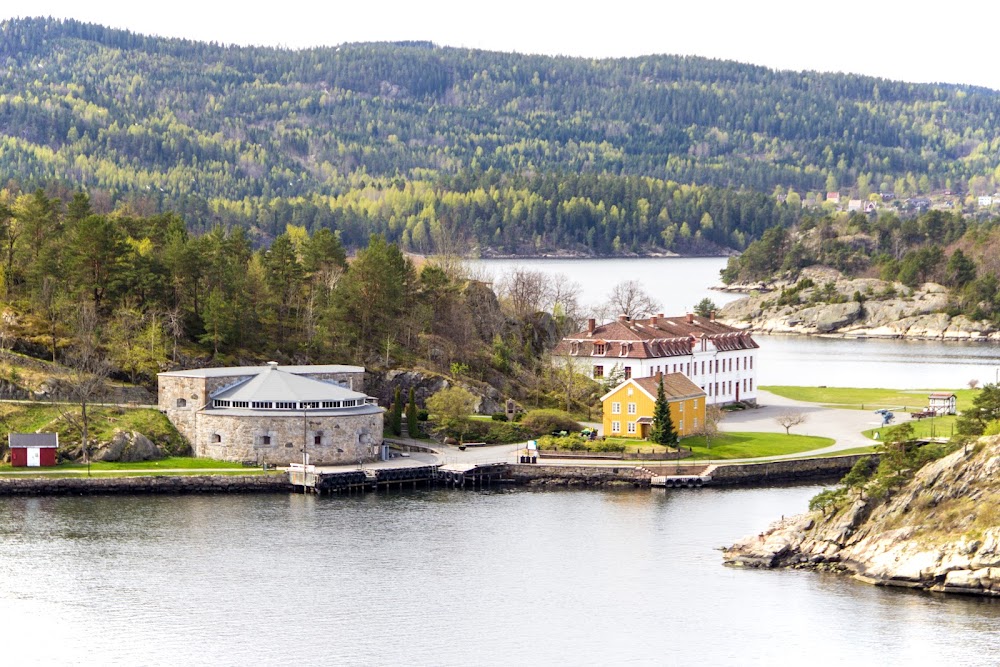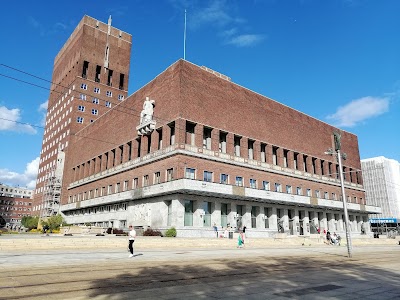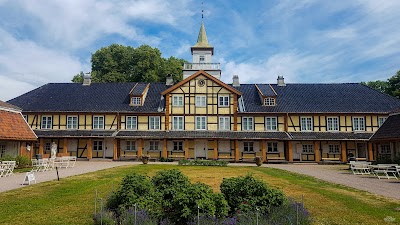Oslo Opera House (Operahuset)
Related Places
Overview
The Oslo Opera House, a stunning example of modern architecture, proudly graces the heart of Norway's capital, serving as a vibrant beacon of art and culture. Opened in April 2008, this architectural marvel is situated in the Bjørvika neighborhood, right alongside the scenic Oslofjord waterfront. Designed by the esteemed Norwegian firm Snøhetta, the Opera House has swiftly become one of Oslo’s most iconic landmarks, attracting over a million visitors each year.
The building’s design is grounded in the philosophy of accessibility, inviting everyone to experience the arts. Its sloping exterior allows visitors to walk on its roof, providing breathtaking panoramic views of Oslo’s skyline, the fjord, and the lush surrounding hills. The sleek marble and granite façade lends a contemporary edge, while the warm oak interiors create a welcoming atmosphere for those attending world-class performances.
The history of the Oslo Opera House reflects Norway's dedication to cultural enrichment. The decision to construct a new opera house was made in 1999, with the aim of establishing a state-of-the-art venue for the Norwegian National Opera and Ballet. After nearly a decade of meticulous planning and construction, the building was inaugurated by King Harald V. Since then, it has played host to a myriad of operas, ballets, and concerts, both traditional and avant-garde, attracting performers and audiences from around the globe.
Importantly, the Opera House transcends being merely a performance venue; it serves as a public space that fosters community interaction. Its expansive roof, reminiscent of an iceberg rising from the fjord, is a year-round magnet for both locals and tourists. In the summer, the area buzzes with sunbathers, picnickers, and admirers of the stunning views, while in winter, it transforms into a picturesque snowy wonderland.
One of the most compelling aspects of the Opera House is its commitment to sustainability and environmental responsibility. The building utilizes geothermal energy for heating and cooling, while its design incorporates various energy-efficient technologies. Additionally, the use of durable materials like Carrara marble and Arctic granite ensures that the structure withstands harsh weather conditions, preserving its beauty and functionality for years to come.
Inside, the main auditorium is a marvel in both acoustics and aesthetics. Its horseshoe-shaped layout enhances the listening experience, bringing the audience closer to the stage. The interior is adorned with oak, which not only provides excellent sound quality but also contributes to a warm and inviting ambiance. With a seating capacity of over 1,300, the auditorium offers an intimate yet comfortable setting for all spectators.
For art lovers, the Opera House is a treasure trove of creativity. It hosts various art installations and exhibitions throughout the year, with the standout being "She Lies," a striking 12-meter-tall sculpture by Monica Bonvicini. This glass and stainless steel piece floats in the adjacent fjord, rotating with the tides to embody the dynamic relationship between art and nature, creating a constantly evolving visual experience.
Guided tours of the Oslo Opera House are available for those eager to explore its architecture and history in depth. These tours provide exclusive insights into the behind-the-scenes workings of this grand institution, including visits to the costume and stage design workshops. Visitors can learn about the meticulous craftsmanship that goes into producing the spectacular performances seen on stage.
The Opera House also features excellent dining options, with a range of restaurants offering culinary delights to satisfy every palate. Whether you’re in the mood for traditional Norwegian cuisine or international fare, there’s something for everyone. Dining with views of the fjord adds a special touch to the overall experience, making a visit to the Opera House a feast for the senses.
In conclusion, the Oslo Opera House is not just a center for performing arts; it is a cultural icon, a public space, and a testament to modern architectural brilliance. It embodies the fusion of culture, art, and community, making it a must-visit destination for anyone traveling to Oslo. Whether you are an opera aficionado, an architecture enthusiast, or simply someone seeking to enjoy breathtaking views and contemporary art, the Oslo Opera House promises an unforgettable experience.


